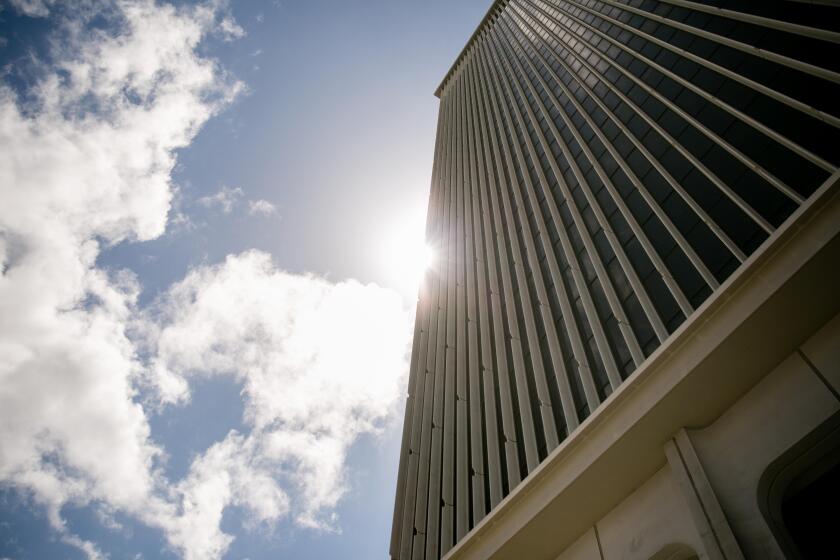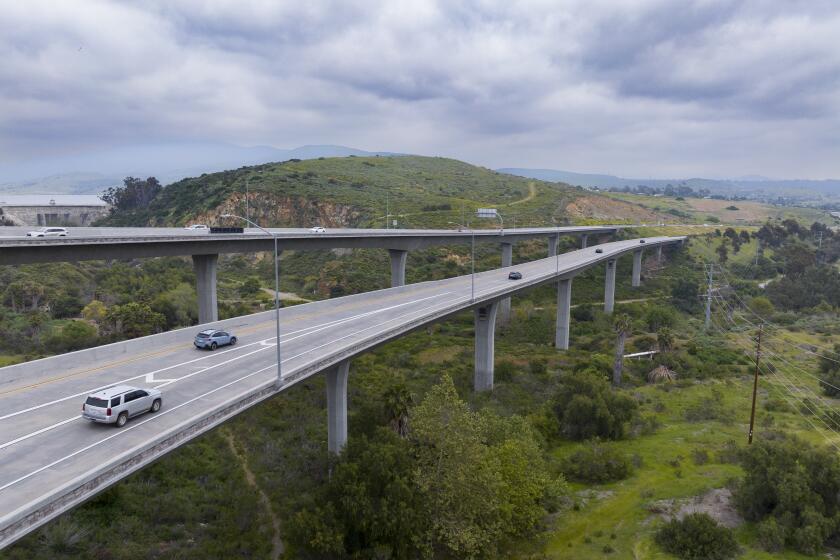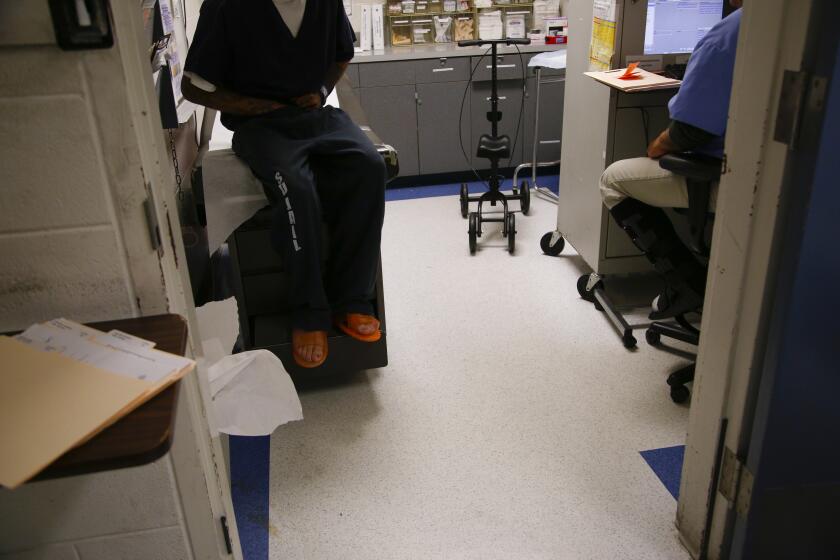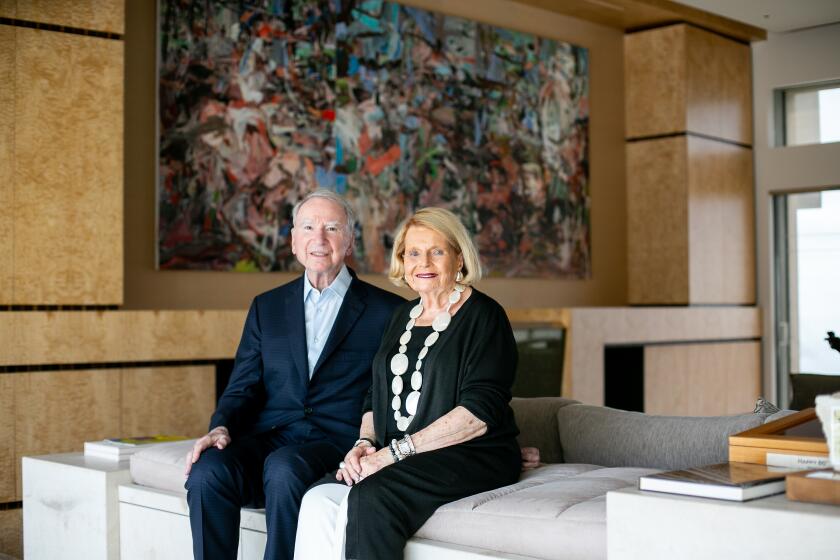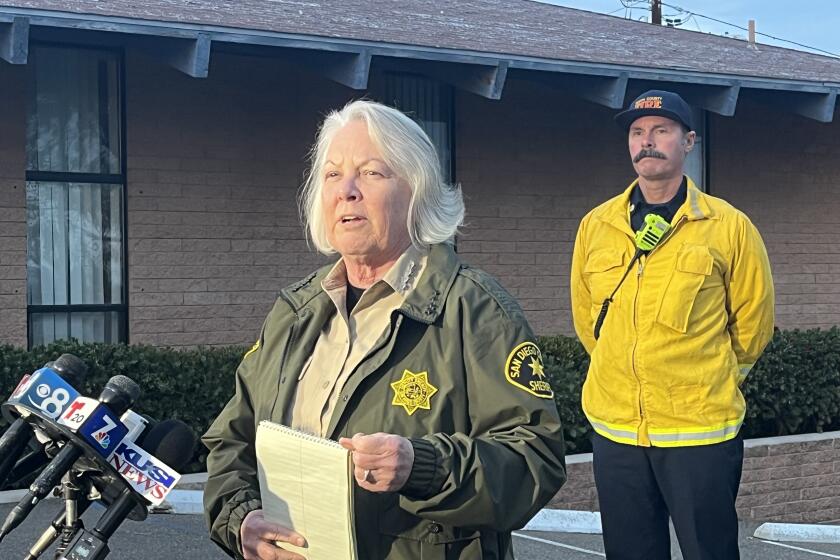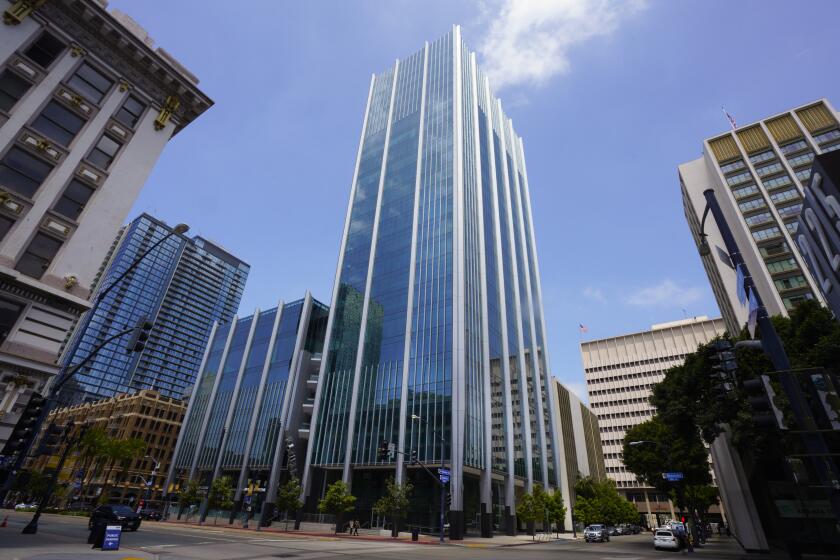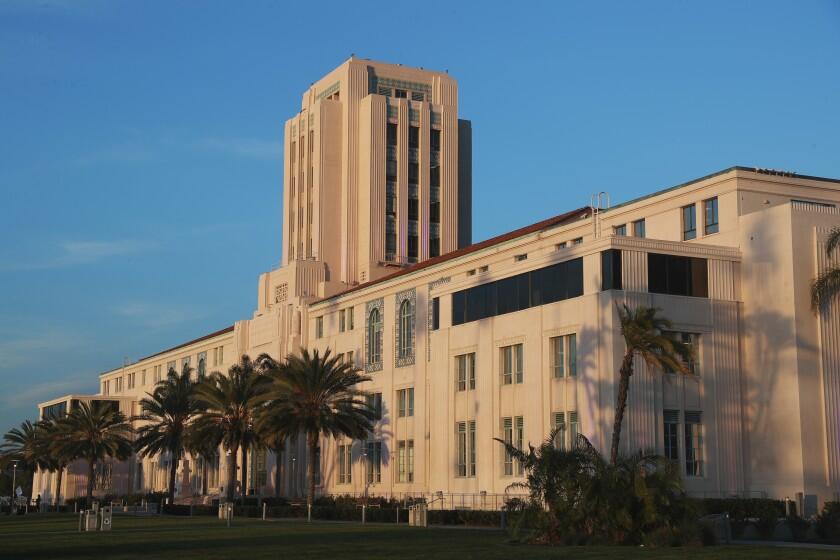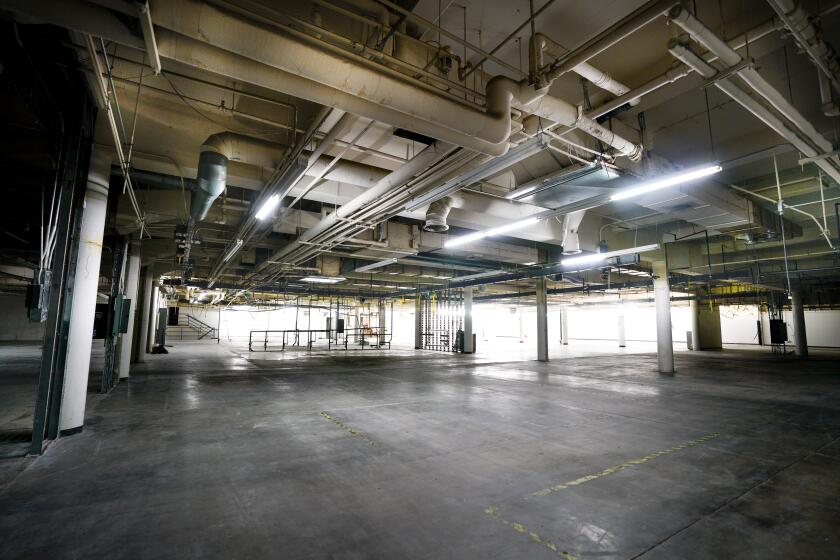Judge dismisses lawsuit accusing San Diego officials of exposing city workers to asbestos
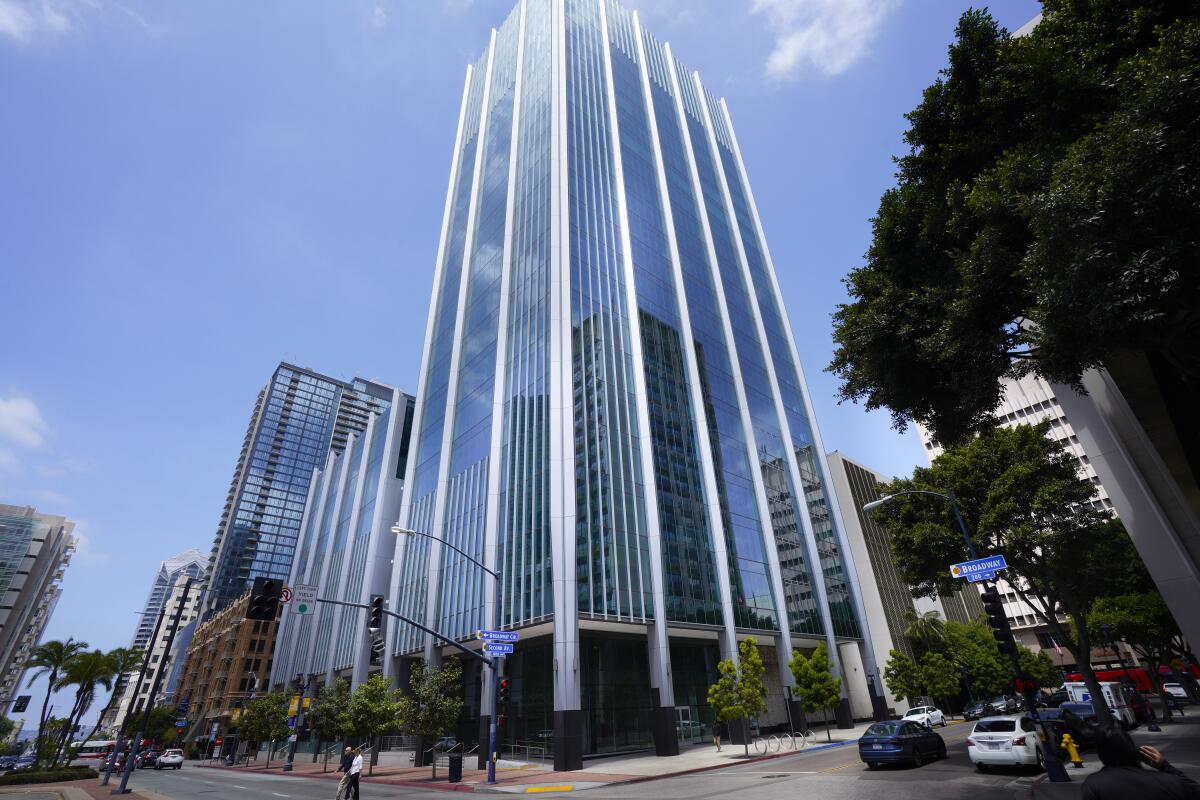
The plaintiffs are free to pursue their claims through the state workers’ compensation system, the judge said at a Tuesday hearing
Early last year, just weeks before a jury was scheduled to decide whether the city of San Diego mishandled a high-profile real estate deal, a Superior Court judge dismissed the last claims from the lawsuit on the grounds that there was not enough evidence to move forward.
Now a different judge has tossed out of court another lawsuit challenging the city’s response to possible asbestos exposures inside another leased downtown office tower, just before the case was headed to trial.
Judge Kenneth J. Medel on Tuesday dismissed the lawsuit filed by dozens of San Diego city workers who said they were exposed to asbestos during a renovation to their workspaces at 1010 Second Ave., a high-rise known as the Executive Complex.
The judge said the plaintiffs failed to show that city officials wrongly required them to work inside the building while knowing that the cancer-causing agent was being disturbed.
If they want to proceed with a claim against their employer, they are free to use the state workers’ compensation system to secure benefits or damages related to any injuries, the judge ruled.
“The policy to use the workers’ compensation system is pretty strong,” Medel said in upholding a tentative ruling issued late Monday. “It would take evidence to show that it shouldn’t be used here, and I don’t think the requirements that would need to be met are met here.”
The decision closes a lawsuit that dates back five years, long before officials in the administration of former Mayor Kevin Faulconer moved hundreds of city employees into the asbestos-tainted office tower at 101 Ash St.
The city of San Diego’s 2016 lease-to-own agreement for the downtown high-rise has been the subject of litigation, criminal investigation and public scrutiny for years.
Forty San Diego city employees who were assigned workspaces inside the Executive Complex during a long-planned renovation that had begun in 2017 sued the city after the county Air Pollution Control District issued a notice of violation for asbestos in the 25-story building.
They were among 500 or more people working at their desks inside the office tower as it was undergoing a major renovation before city officials ordered the building evacuated immediately following the Jan. 25, 2018, violation.
Evidence presented in the case showed emails and photographs sent by a number of workers raising questions about whether it were safe to be working inside the building during renovations.
But lawyers defending the city said no evidence had been presented showing that city officials knew that employees were exposed to asbestos. Instead, attorney James Parker told Medel on Tuesday, city leaders moved workers out as soon as the asbestos was discovered.
“Was asbestos being removed? Yes. Does that mean anybody is being exposed to that? No,” Parker told the judge. “They never reported any excess asbestos in the air, period. They never did. The owners of the building never said anything to the city.”
The plaintiffs’ attorney Michael Aguirre, the former San Diego city attorney, argued that the case should be presented to a jury, in part because so many people had told their supervisors they were afraid they were being exposed to asbestos within weeks of the renovations beginning in summer 2017.
“The city knew that asbestos was being moved from the building,” he argued Tuesday. “The city intentionally did not tell employees that information. That should be enough” to proceed to trial, he said.
City workers had told their bosses months before the violation that they were worried they may be being exposed to asbestos during the construction.
“This is the view from my cubicle,” one city worker emailed in September. “I can hear the crews tearing down the windows and they are all wearing respirators/ protective masks because of the asbestos and other harmful chemicals being released during demolition.”
The employee said safety precautions did not appear to be working.
“This lack of sealing could be letting off all of that harmful material to drift into our offices,” he wrote. “Can we please (resolve) this situation ASAP?”
Other city workers outlined symptoms they said they and their coworkers had begun experiencing during the renovation, including difficulty breathing, bronchial issues, shortness of breath and a burning throat.
“The effects are also making the office staff very tired from the stress on the body it is causing where it is difficult sleeping at night,” another city employee wrote in an email.
Parker argued there was no proof submitted to the court that showed any San Diego employees had suffered from asbestos exposure.
He said if they ever do get sick, they are welcome to pursue workers’ compensation claims.
“Nobody has offered any evidence that it happened before (Jan. 25, 2018),” the defense lawyer said.
Once the construction site was hit with an asbestos violation, the city moved out all of the workers assigned to the property.
But Aguirre argued that a number of those employees were later moved into 101 Ash St., the former Sempra Energy headquarters.
That building remains the subject of civil litigation filed by plaintiffs who say they were wrongly exposed to asbestos there. The city’s deal to buy that tower also was the subject of civil and criminal investigations.
The civil case challenging the Ash Street acquisition was dismissed just before it was scheduled for trial. The criminal case ended with a guilty plea to a single misdemeanor charge after the city bought out the initial lease. The building still cannot be safely occupied.
But Medel said the Executive Complex plaintiffs had not shown that the workers’ compensation system should be bypassed in favor of a jury trial in Superior Court.
“I’m going to stick with the tentative and wish everyone the best of luck,” he said.
Get Essential San Diego, weekday mornings
Get top headlines from the Union-Tribune in your inbox weekday mornings, including top news, local, sports, business, entertainment and opinion.
You may occasionally receive promotional content from the San Diego Union-Tribune.
